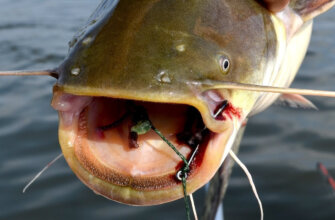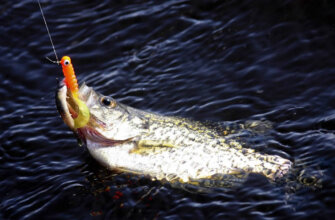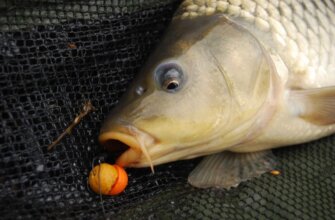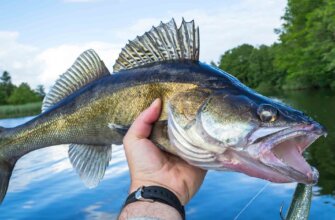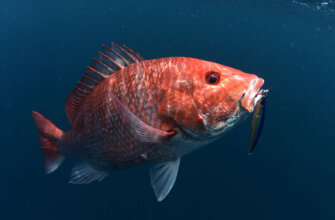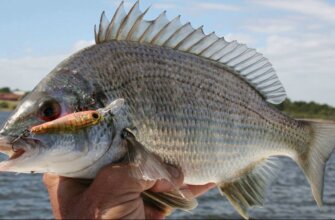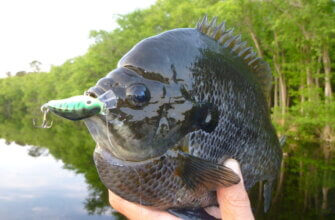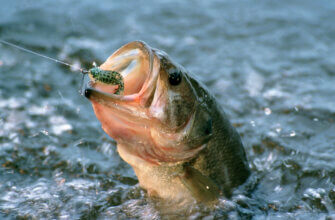Trout fishing is a popular recreational activity enjoyed by anglers around the world. There are several species of trout, including rainbow trout, brown trout, brook trout, and cutthroat trout, among others. Each species has its own characteristics and preferred habitats.
10 best baits for trout
Trout can be quite selective when it comes to bait, but there are several types of bait that tend to be effective for trout fishing.
Here are 10 popular baits:
- Worms. Nightcrawlers or garden worms are a classic choice for trout fishing. They are readily available and attractive to trout.
- PowerBait. This specially formulated dough bait is designed to attract trout. It comes in various colors and scents, mimicking natural food sources for trout.
- Salmon eggs. Trout are known to be attracted to the scent of salmon eggs. You can use fresh or preserved eggs, which can be found at most bait shops.
- Minnows. Live minnows or small fish can be effective for enticing larger trout. Make sure to check local regulations regarding the use of live bait.
- Insects. Trout feed on insects, so using flies, such as dry flies or nymphs, can be very effective. These imitate natural insects like mayflies, caddisflies, or stoneflies.
- Corn. Plain canned corn is a popular and affordable bait for trout fishing. You can use a small piece of corn kernel on a hook or combine it with other bait options.
- Cheese. Some anglers swear by using cheese, particularly varieties like Velveeta or cheddar, as bait for trout. The strong scent can attract hungry fish.
- Spinners. Spinners are lures that spin rapidly when pulled through the water, creating flashes of light and vibrations that attract trout. They come in various colors and sizes.
- Crickets or grasshoppers. These natural baits work well when trout are actively feeding on insects near the water’s edge. Use a hook or small treble hook to secure them.
- Dough baits. Apart from PowerBait, there are other commercially available dough baits designed specifically for trout fishing. These baits often come in different colors and scents to attract trout.
Worms
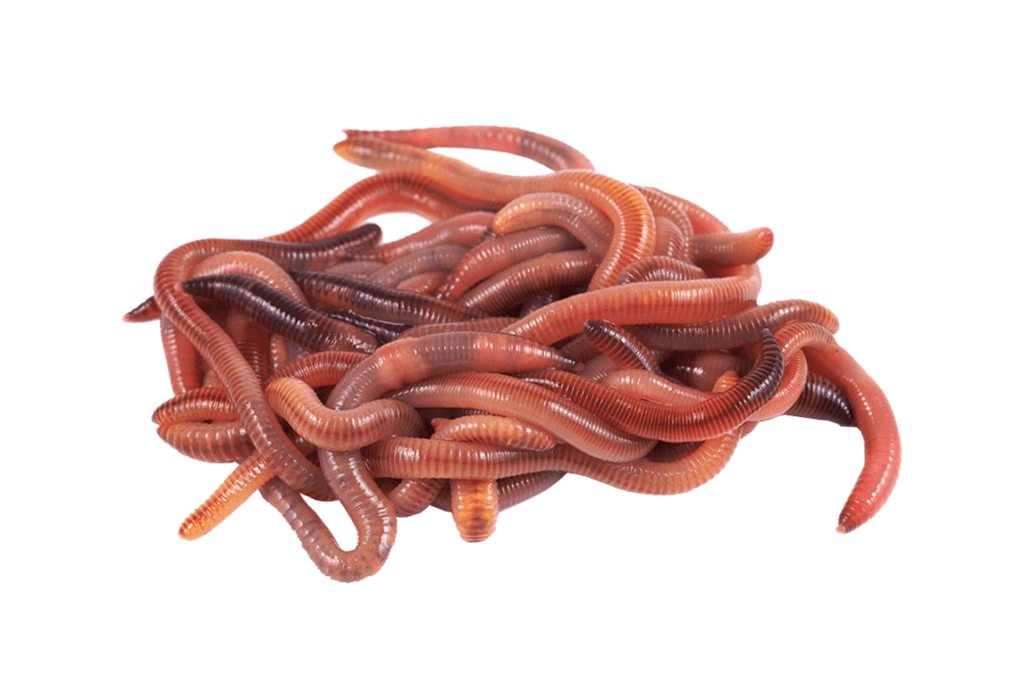
Worms are a popular and effective bait for trout fishing. Trout are known to be opportunistic feeders, and worms are a natural part of their diet in many bodies of water. Here are some tips for using worms for trout fishing:
- Worm selection: Choose live worms such as nightcrawlers or red worms. These are readily available at bait and tackle shops. Nightcrawlers are larger and can be cut into smaller pieces, while red worms are smaller and can be used whole or in halves.
- Hook size: For trout fishing, you’ll want to use small hooks to match the size of the worm and the trout’s mouth. Sizes 8 to 12 are commonly used. Consider using barbless hooks to make catch-and-release easier and reduce harm to the fish.
- Baiting the hook: Thread the worm onto the hook, starting near the head and working your way up the body. Leave the tail free to wiggle and attract trout. If you’re using smaller worms, you can hook them through the middle or use multiple worms on the same hook.
- Rigging options: There are different ways to rig your worm for trout fishing. One common method is using a basic bottom rig, where you attach a sinker a few inches above the hook to keep the bait near the bottom. Another option is a float rig, where you attach a small float or bobber a few feet above the hook to suspend the worm at a desired depth.
- Casting and presentation: Cast your baited hook into likely trout-holding areas, such as pools, riffles, or near submerged structures. Allow the bait to sink to the desired depth, then slowly reel in or gently twitch the bait to mimic the movement of a live worm. Trout are often attracted to the movement of the bait.
- Patience and observation: Trout can be finicky at times, so it’s important to be patient and observant. Pay attention to any signs of fish activity, such as surface feeding or swirls, and adjust your technique accordingly. If you’re not getting any bites, consider changing your location or trying different bait options.
PowerBait
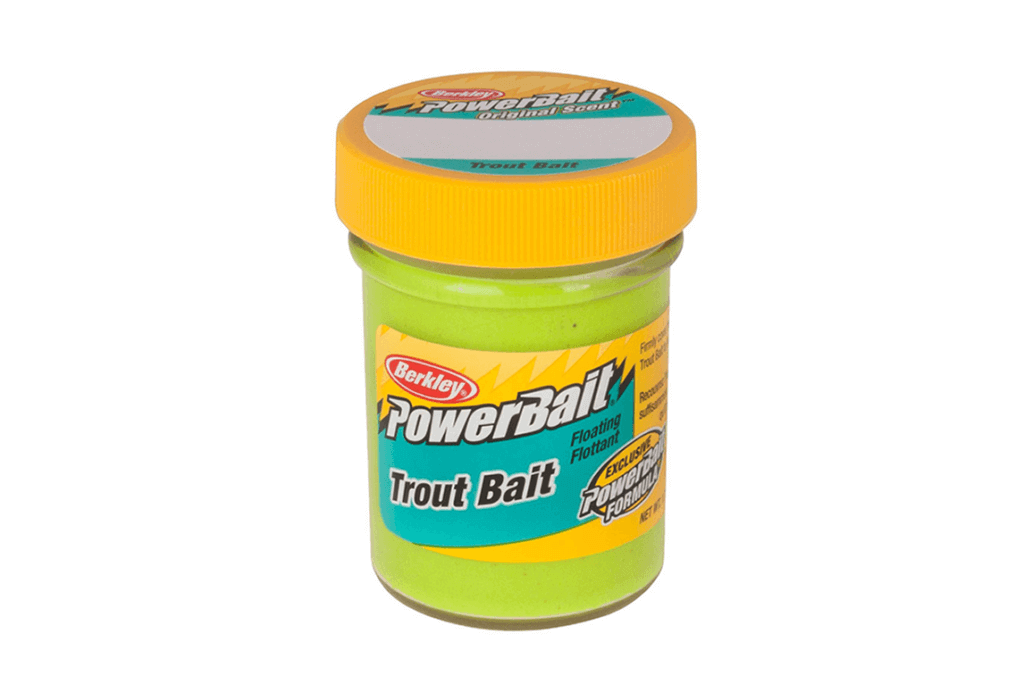
PowerBait is a highly popular and effective bait for targeting trout. It is a specially formulated synthetic bait that is designed to mimic the scent and texture of natural trout food sources. PowerBait comes in a variety of colors and scents, allowing anglers to choose the most appealing option for the prevailing conditions and trout preferences.
When using PowerBait for trout, it’s important to select the appropriate size and shape of the bait to match the trout’s feeding habits. Mold a small amount of PowerBait onto a small hook, such as a size 10 or 12, ensuring that the hook is securely embedded in the bait. Cast the bait into areas where trout are likely to be, such as near underwater structures, along current seams, or in deep pools. Allow the PowerBait to sink and rest near the bottom or retrieve it slowly, imparting slight movements to attract trout. Trout can be found at different depths, so adjusting the depth of the bait can be important. Pay attention to any signs of bites or nibbles, as trout can sometimes bite lightly on PowerBait. Using a light or ultralight fishing setup is suitable for trout fishing, as they can put up a strong fight on lighter tackle. PowerBait can be used with various techniques, such as float fishing, bottom fishing, or suspended fishing with a small weight.
Experiment with different presentations, colors, and scents to find the most successful approach for attracting trout. Remember to handle the PowerBait carefully to maintain its texture and effectiveness.
Salmon eggs
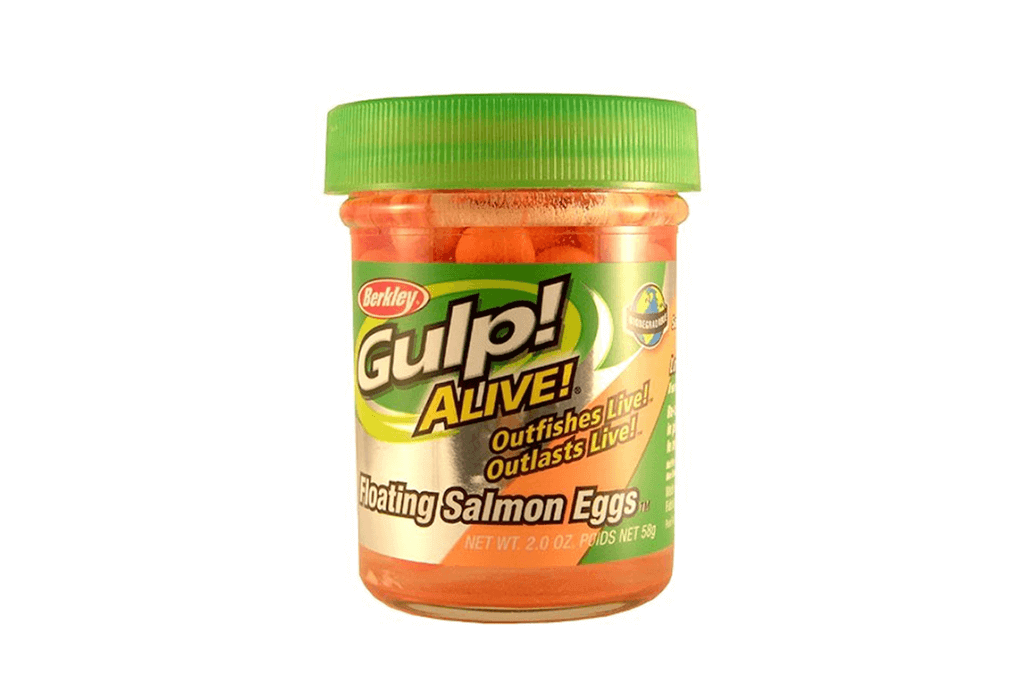
Salmon eggs are a natural and highly effective bait for targeting trout. Trout are known to feed on salmon eggs as they are a protein-rich and easily accessible food source.
When using salmon eggs for trout, it’s important to select fresh and high-quality eggs. Thread a single or a small cluster of salmon eggs onto a small hook, such as a size 10 or 12, ensuring that the hook is securely embedded in the eggs but still allowing them to have a natural appearance. Cast the bait into areas where trout are likely to be, such as near underwater structures, along current seams, or in deep pools. Allow the eggs to drift naturally with the current or retrieve them slowly, imparting subtle movements to mimic the drifting of real eggs. Trout can be attracted to salmon eggs both near the surface and at various depths, so adjusting the depth of the bait can be important. Pay attention to any signs of bites or nibbles, as trout can sometimes bite softly on salmon eggs. Using a light or ultralight fishing setup is suitable for trout fishing, as they can provide a spirited fight on lighter tackle. Salmon eggs can be used with various techniques, such as float fishing, bottom fishing, or drift fishing.
Experiment with different presentations, depths, and locations to find the most successful approach for attracting trout. Remember to handle the salmon eggs with care and keep them properly refrigerated to maintain their freshness and appeal to trout.
Minnows
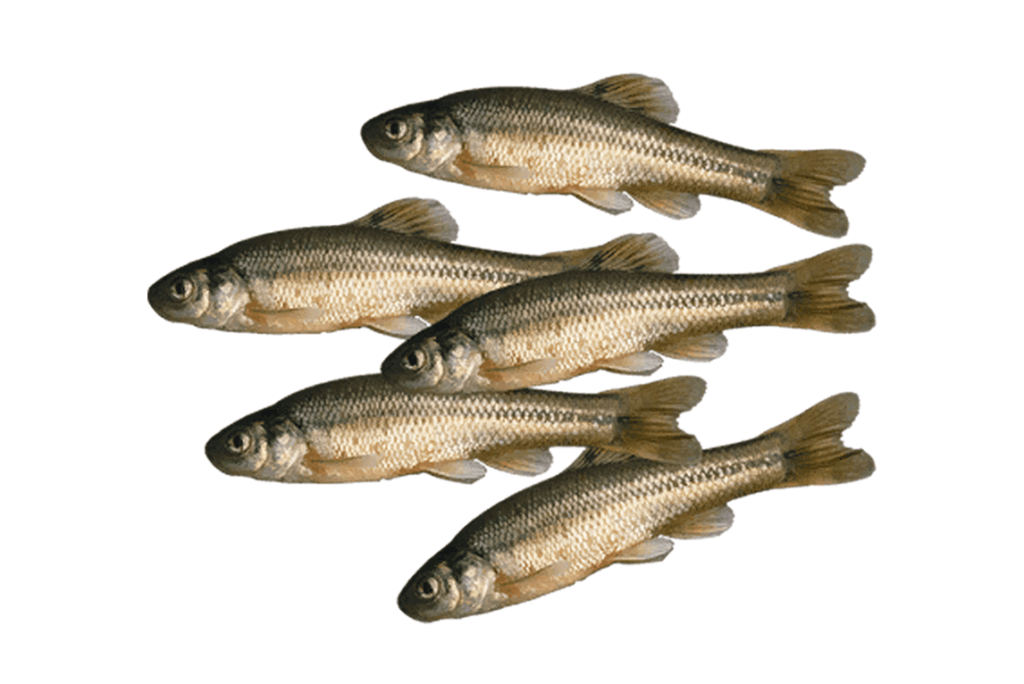
Minnows are a highly effective live bait for targeting trout. Trout are predatory fish and often feed on small minnows as they provide a natural and enticing food source.
When using minnows for trout, it’s important to choose lively and healthy specimens. Hook the minnow through the lips or just behind the dorsal fin using a small hook, such as a size 8 or 10, ensuring the hook is securely embedded without hindering the minnow’s movement. Cast the bait into areas where trout are likely to be, such as near underwater structures, along current seams, or in deep pools. Allow the minnow to swim naturally or retrieve it with a slow and steady retrieve, imitating the movement of a wounded minnow. Trout can be found at different depths, so adjusting the depth of the bait can be crucial. Pay attention to any signs of strikes or bites, as trout can be quick to react to live minnows. Using a light or ultralight fishing setup is suitable for trout fishing, as they can put up a strong fight on lighter tackle. Minnows can be used with various techniques, such as float fishing, casting, or trolling.
Experiment with different presentations and depths to find the most successful approach for attracting trout. Remember to handle the minnows with care and keep them in a suitable container to maintain their liveliness and attractiveness to trout.
Insects
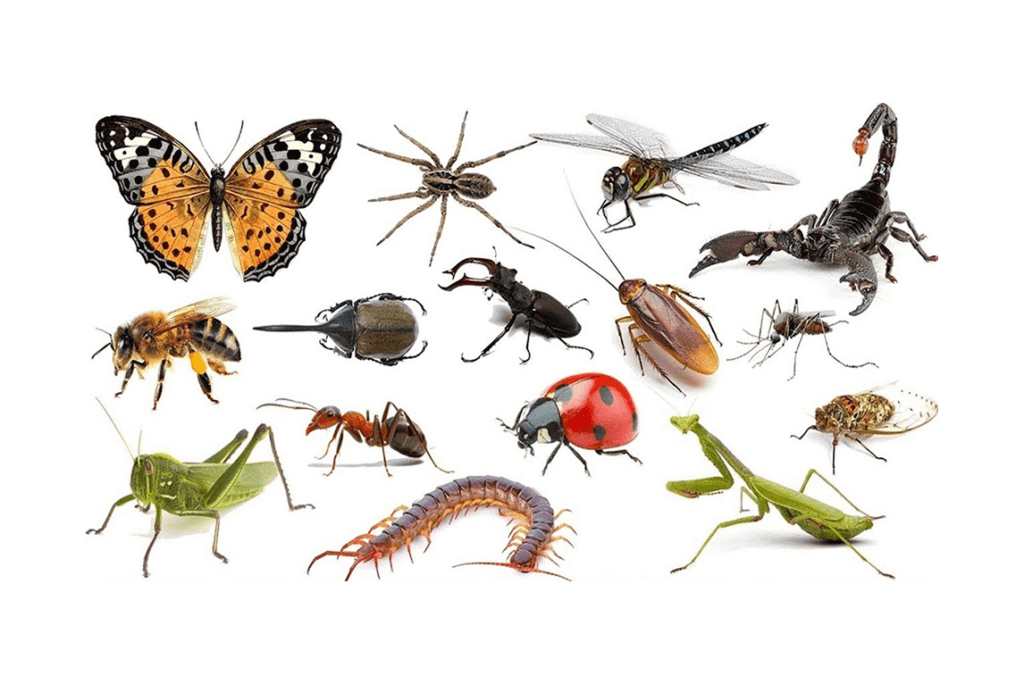
Insects are another excellent bait option for trout fishing.
Here are some popular insect options and tips for using them as bait for trout fishing:
- Mayflies: Mayflies are one of the most common insects found near trout streams and rivers. They have a slender body and delicate wings. Matching the size and color of the local mayfly species can be crucial. Mayfly imitations, such as dry flies or nymph patterns, can be effective when trout are actively feeding on them.
- Caddisflies: Caddisflies are another abundant insect that trout feed on. They have a more moth-like appearance, with tent-shaped wings. Caddisfly patterns, both dry flies and nymphs, can be productive when trout are targeting these insects. It’s important to choose the appropriate size and color to imitate the local caddisfly species.
- Stoneflies: Stoneflies are larger insects that can attract the attention of larger trout. They have a distinct elongated body and prominent wings. Stonefly imitations, such as stonefly nymphs or adult patterns, can be effective, especially in rivers with populations of these insects.
- Grasshoppers: During the summer months, grasshoppers become a significant food source for trout. These insects are larger and provide a substantial meal for hungry trout. Using realistic grasshopper imitations, both dry flies and nymphs, can be highly successful when fishing near grassy areas or on the banks of streams.
- Beetles: Beetles are another insect that trout eagerly consume. They are often found near overhanging vegetation and can fall into the water, becoming easy prey for trout. Black beetle imitations, both dry flies and nymphs, are commonly used to entice trout.
- Ants: Ants are small insects that frequently end up in the water, attracting the attention of trout. Black or red ant patterns, both dry flies and nymphs, can be effective choices. Presenting them near the banks or on overhanging vegetation can be particularly productive.
Corn
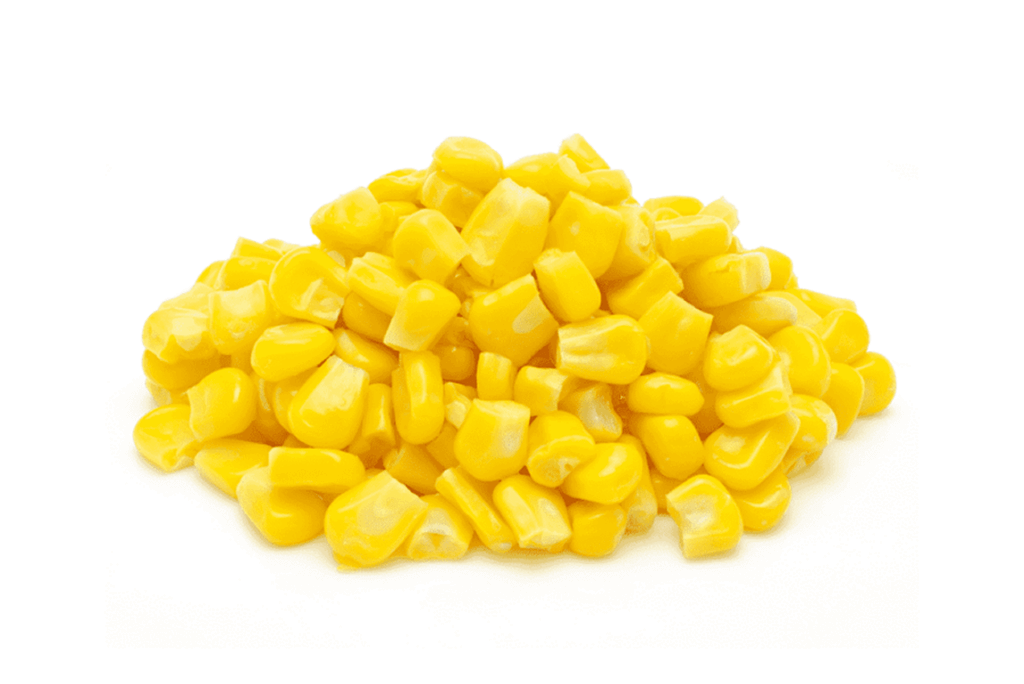
Corn is a popular and effective bait for targeting trout. While not a natural food source for trout, corn is highly visible and can attract trout due to its bright color and scent.
When using corn for trout, it’s important to choose canned corn or corn kernels that have been properly prepared and are suitable for fishing. Thread a few kernels onto a small hook, such as a size 12 or 14, ensuring that the hook is securely embedded in the corn. Cast the bait into areas where trout are likely to be, such as near underwater structures, along current seams, or in pools and eddies. Allow the corn to drift naturally with the current or retrieve it slowly, imparting slight movements to catch the trout’s attention. Trout can be found feeding at various depths, so adjusting the depth of the bait can be important. Pay attention to any signs of bites or nibbles, as trout may sometimes take the corn gently. Using a light or ultralight fishing setup is suitable for trout fishing, as they can provide a thrilling fight on lighter tackle. Corn can be used with various techniques, such as bottom fishing, float fishing, or suspended fishing with a small weight.
Experiment with different presentations, colors, and scents to find the most successful approach for attracting trout. Remember to handle the bait carefully and dispose of any unused corn properly to avoid environmental harm.
Cheese
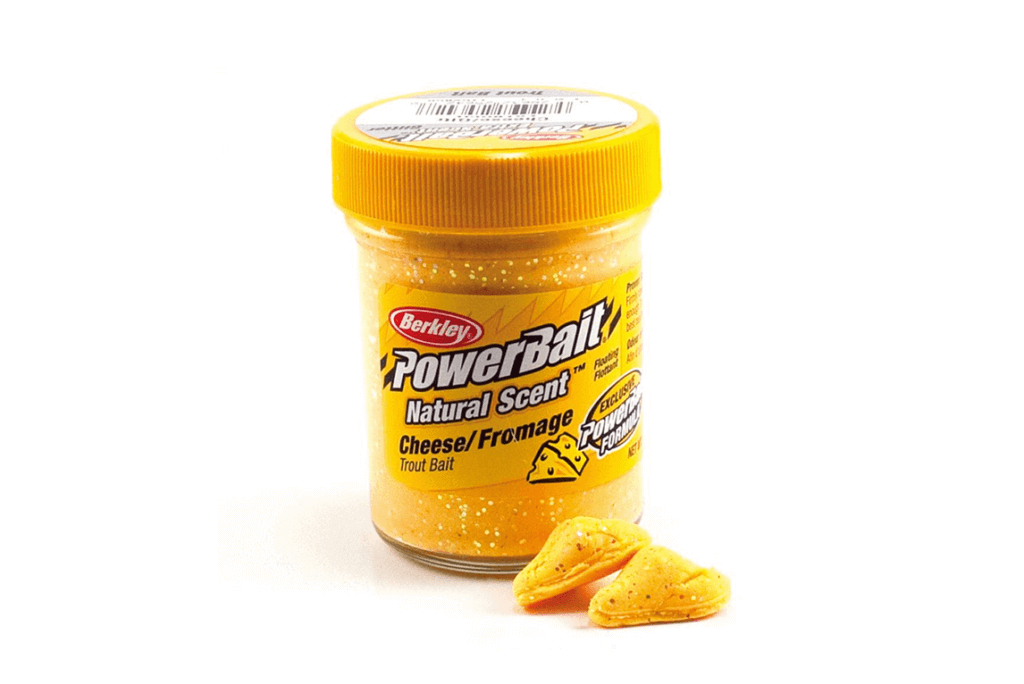
Cheese can be an effective bait for targeting trout. While not a natural food source for trout, cheese emits a strong scent and can attract trout due to its aroma and flavor.
When using cheese for trout, it’s important to choose a soft and aromatic cheese that can easily be molded onto a hook. Some popular options include cheddar, American, or even processed cheese. Mold a small piece of cheese onto a small hook, such as a size 12 or 14, ensuring that the hook is securely embedded in the cheese. Cast the bait into areas where trout are likely to be, such as near underwater structures, along current seams, or in pools and eddies. Allow the cheese to sink naturally or retrieve it slowly, imparting slight movements to entice the trout. Trout can be found feeding at various depths, so adjusting the depth of the bait can be important. Pay attention to any signs of bites or nibbles, as trout may sometimes take the cheese gently. Using a light or ultralight fishing setup is suitable for trout fishing, as they can provide a thrilling fight on lighter tackle. Cheese can be used with various techniques, such as bottom fishing, float fishing, or suspended fishing with a small weight.
Experiment with different cheese types, flavors, and presentations to find the most successful approach for attracting trout. Remember to handle the bait carefully and dispose of any unused cheese properly to avoid environmental harm.
Spinners
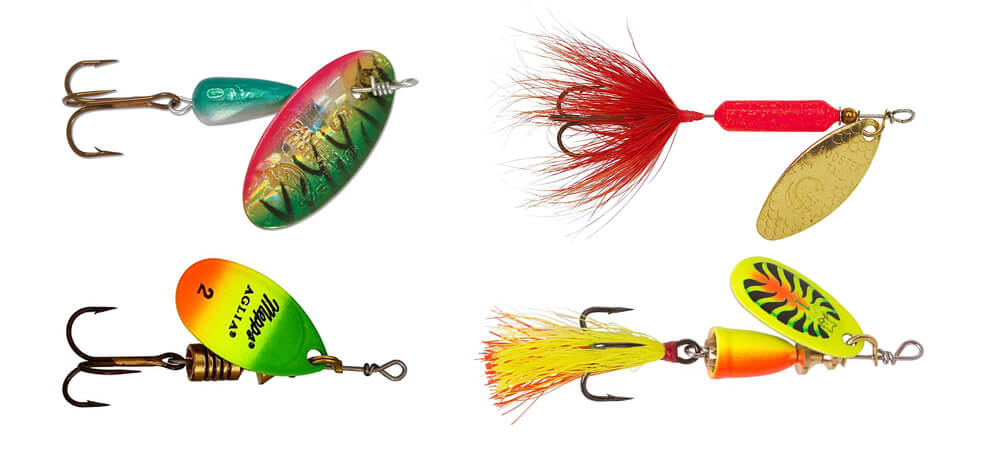
Spinners are a popular and effective lure for targeting trout. They consist of a metal blade that rotates when retrieved through the water, creating flash and vibration that can trigger aggressive strikes from trout. They imitate small baitfish or insects, attracting the attention of trout and triggering strikes.
Here are a few types of spinners commonly used for trout fishing:
- Panther Martin: Panther Martin spinners are widely recognized and effective for trout fishing. They have a unique blade design that creates a lively spinning action. These spinners come in various sizes and color patterns, allowing you to match the hatch or experiment with different combinations.
- Mepps Aglia: The Mepps Aglia spinner is another popular choice for trout anglers. It features a teardrop-shaped blade and is available in different sizes and colors. The Aglia’s blade spins at a medium to fast retrieve, producing enticing vibrations.
- Rooster Tail: Rooster Tail spinners are known for their pulsating hackle tail that adds extra movement to the lure. They come in a variety of colors and sizes and are effective for both stocked and wild trout.
- Blue Fox Vibrax: The Blue Fox Vibrax spinner incorporates a brass blade with a free-turning brass gear, creating strong vibrations and flash. It has a patented two-part body design that emits low-frequency sound waves, attracting trout from a distance.
- Worden’s Original Rooster Tail: Worden’s Original Rooster Tail spinner is a classic trout lure. It features a spinning blade, a weighted body, and a colorful tail. The Rooster Tail’s design allows for long casts and effective fishing in various water conditions.
Crickets or grasshoppers
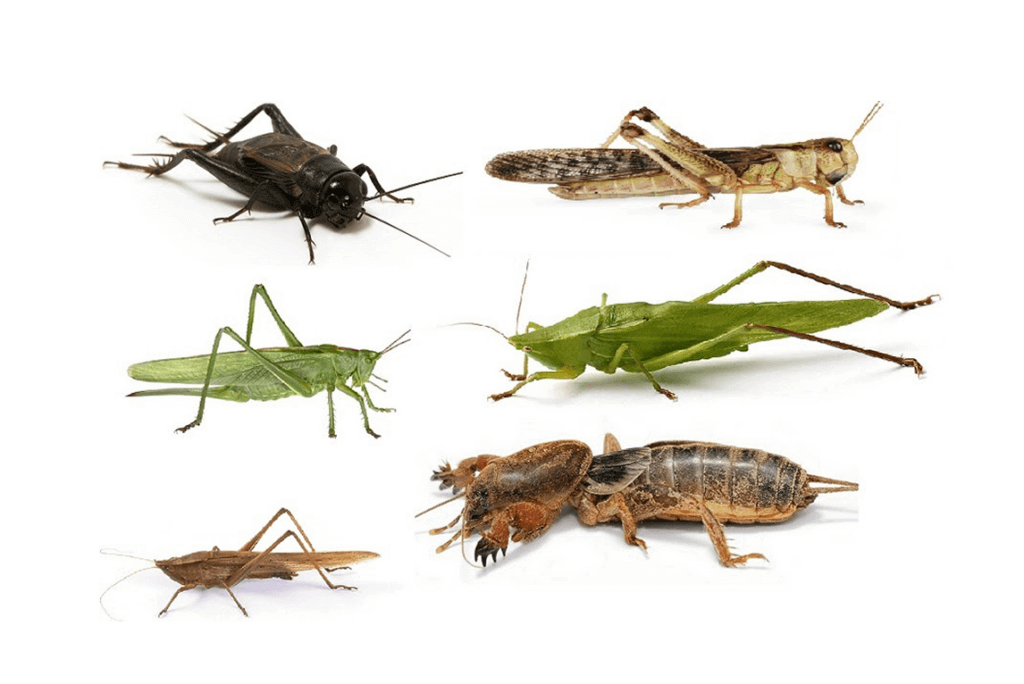
Crickets and grasshoppers are natural and highly effective baits for targeting trout. These insects are often found near water bodies, making them a natural food source for trout.
When using crickets or grasshoppers for trout, it’s important to choose lively and healthy specimens. Hook the cricket or grasshopper through the thorax or just behind the head using a small hook, such as a size 10 or 12, ensuring that the hook is securely embedded without hindering the insect’s movement. Cast the bait into areas where trout are likely to be, such as near underwater structures, along current seams, or in pools and eddies. Allow the bait to float naturally on the surface or sink it slightly to imitate a struggling insect. Retrieve the bait with a gentle and realistic movement, mimicking the behavior of a live cricket or grasshopper. Trout can be found feeding at various depths, so adjusting the depth of the bait can be important. Pay attention to any signs of strikes or rises, as trout can aggressively take crickets or grasshoppers. Using a light or ultralight fishing setup is suitable for trout fishing, as they can put up a spirited fight on lighter tackle. Crickets and grasshoppers can be presented using various techniques, such as dry fly fishing or hopper-dropper rigs.
Experiment with different presentations, sizes, and colors to find the most successful approach for attracting trout. Remember to handle the insects gently and keep them in a suitable container to maintain their liveliness and appeal to trout.
Dough baits
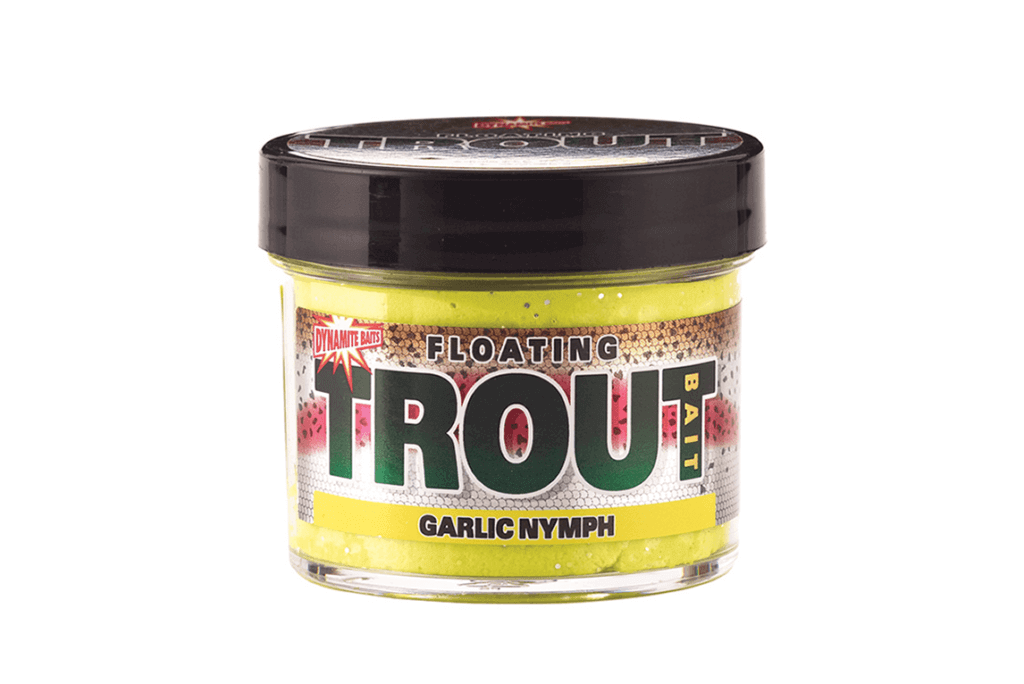
Dough baits are a popular and effective bait option for targeting trout. These baits are typically made of a dough-like mixture that is infused with scents and flavors that attract trout.
When using dough baits for trout, it’s important to choose baits that are specifically formulated for trout fishing. Mold a small piece of dough bait onto a small hook, such as a size 10 or 12, ensuring that the hook is securely embedded in the bait. Cast the bait into areas where trout are likely to be, such as near underwater structures, along current seams, or in pools and eddies. Allow the bait to sink naturally or retrieve it slowly, imparting slight movements to entice the trout. Trout can be found feeding at various depths, so adjusting the depth of the bait can be important. Pay attention to any signs of bites or nibbles, as trout may sometimes take the dough bait gently. Using a light or ultralight fishing setup is suitable for trout fishing, as they can provide an exciting fight on lighter tackle. Dough baits can be used with various techniques, such as bottom fishing, float fishing, or suspended fishing with a small weight.
Experiment with different flavors and scents to find the most successful approach for attracting trout. Remember to handle the bait carefully and dispose of any unused dough bait properly to avoid environmental harm.

